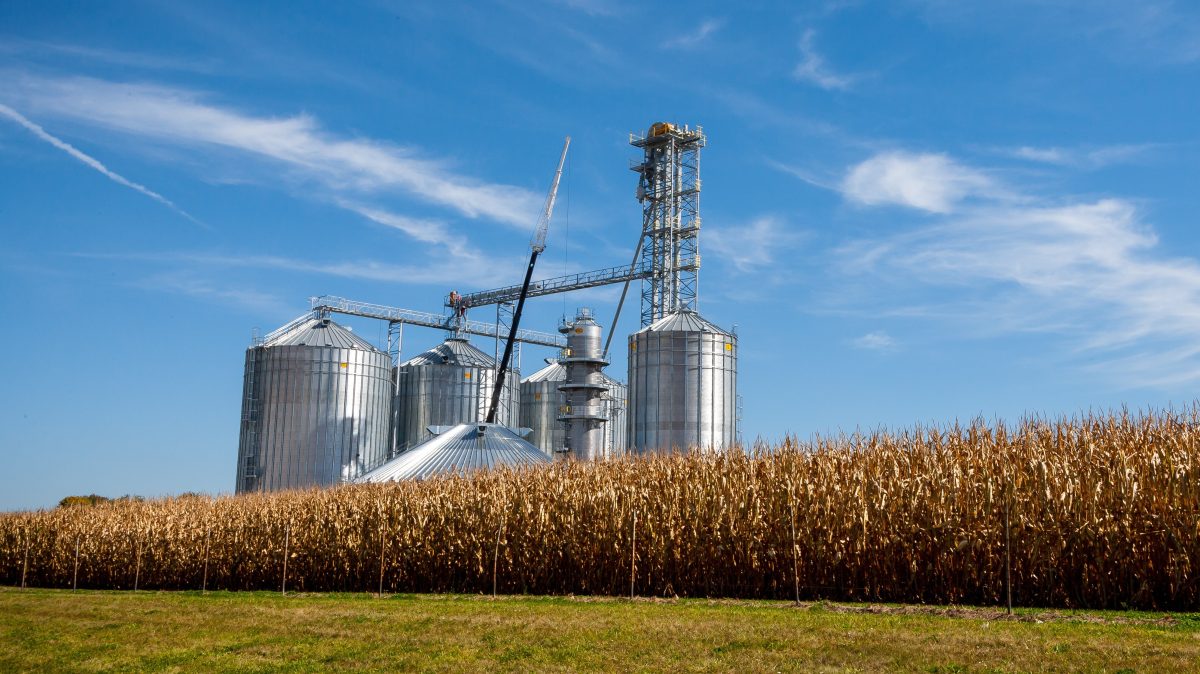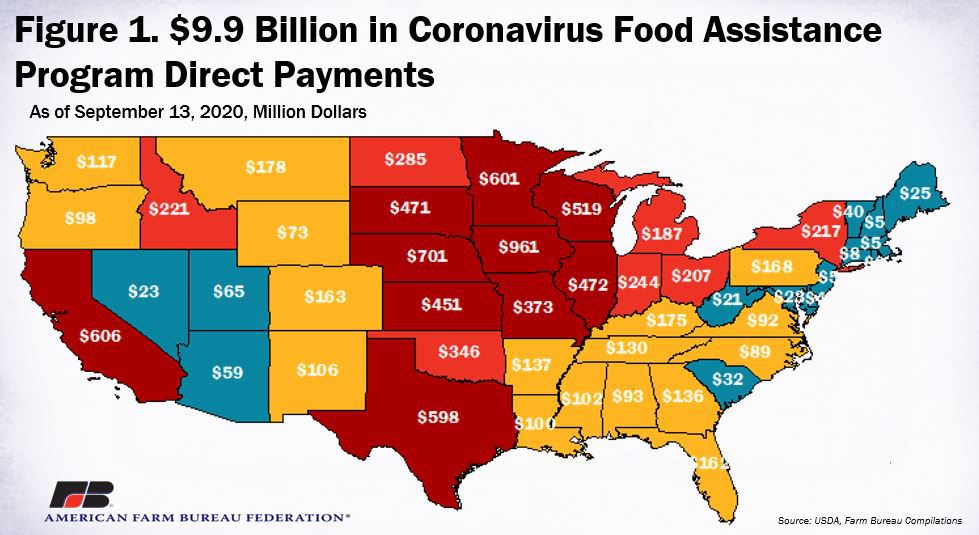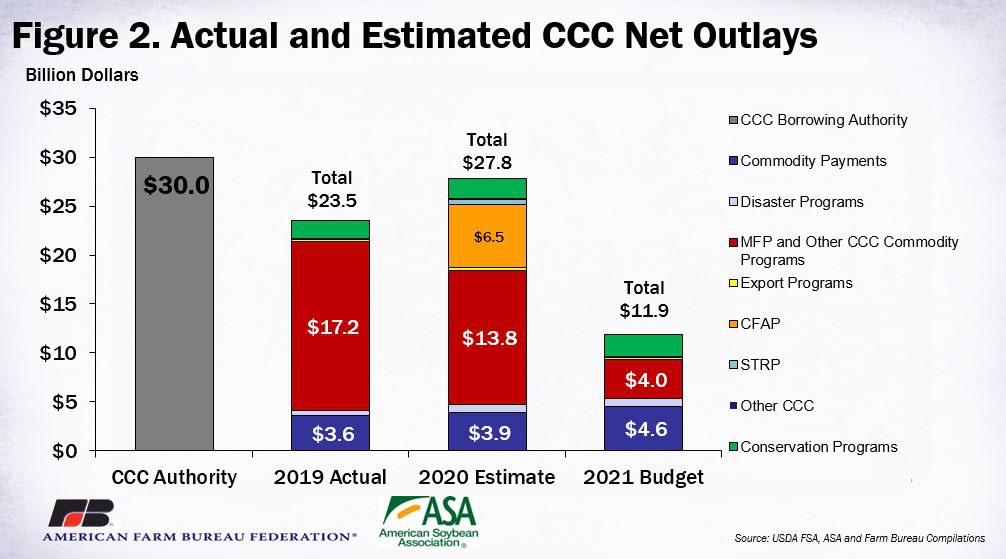Farm Bill Programs At Risk Without Immediate CCC Replenishment
TOPICS
MFP
photo credit: Mark Stebnicki, North Carolina Farm Bureau
John Newton, Ph.D.
Former AFBF Economist
For decades the Commodity Credit Corporation, with authorities granted by Congress, has provided funding to stabilize and support farm income and commodity prices through programs related to commodity and income support, conservation, export promotion, international food aid and disaster assistance, among others. Since 1987, the CCC has been replenished annually at $30 billion to fund many programs farmers rely on, such as Agriculture Risk Coverage, Price Loss Coverage, Dairy Margin Coverage and the Conservation Reserve Program, i.e., Reviewing the Commodity Credit Corporation’s Borrowing Authority.
Because CCC funds were used to help farmers and ranchers impacted by retaliatory tariffs and COVID-19 through the Market Facilitation Program and the Coronavirus Food Assistance Program, respectively, some in Congress are considering not immediately reimbursing the CCC via the expected continuing resolution to extend government funding.
Without an immediate replenishment of the CCC in a continuing resolution (a provision referred to as an “anomaly”), farm bill programs and payments expected to go out in early October would likely exhaust CCC resources by November. As a result, farm bill program payments after this point would be significantly delayed. With farm-level cash receipts at a decade-low, i.e., Farm Cash Receipts Forecasted to Hit a Decade-Low in 2020 and USDA’s Economic Research Service Releases Updated Farm Income Estimates, the lack of CCC resources would jeopardize farm income, farm profitability and conservation efforts. Today’s article reviews recent CCC expenditures and estimates remaining CCC resources.
Recent CCC Expenditures
To provide immediate financial assistance to farmers and ranchers impacted by COVID-19, in early April USDA announced the Coronavirus Food Assistance Program, funded by both appropriated funds from the CCC and the Coronavirus Aid, Relief and Economic Security Act. Of the estimated $16 billion available in CFAP support, e.g., USDA’s CFAP cost-benefit analysis, $9.5 billion was appropriated to the Office of the USDA Secretary through the CARES Act. The remaining $6.5 billion was transferred from the CCC to CFAP.
As of Sept. 13, CFAP payments totaling $9.9 billion have been made to eligible producers. Approximately $4.2 billion has been paid to cattle producers, $1.7 billion has been paid to dairy producers, $1.7 billion has been paid to corn producers, $597 million has been paid to hog producers, $499 million has been paid to soybean producers, $255 million has been paid to cotton producers and all other producers have received $886 million.

Not Much Left in the CCC
In order to estimate the remaining balance in the CCC, information from USDA’s fiscal year 2021 budget summary on expected CCC outlays was reviewed. For the 2020 fiscal year, $3.9 billion in outlays were projected for loan deficiency payments and Agriculture Risk Coverage, Price Loss Coverage and Dairy Margin Coverage payments. Other CCC programs such as MFP payments and disaster program payments were projected at $14.5 billion. On top of these payments, approximately $6.5 billion was charged to CFAP for COVID-19 relief and $530 million was used to fund the Seafood Trade Relief Program, i.e., USDA Announces Tariff Relief for the Seafood Industry. An additional $2 billion in net outlays was estimated for conservation programs. These projected net outlays total nearly $28 billion, and, if realized, suggest as little as $2 billion remains in CCC borrowing authority. Figure 2 highlights actual and projected CCC net outlays by fiscal year.

The CARES Act reimbursed $14 billion of CCC expenses, however, congressional leaders intended for this replenishment to be used to offset COVID-19-related financial losses. It’s expected that USDA will announce a second round of CFAP payments in the coming weeks, which will likely use the $14 billion.
Importantly, with a remaining balance of $2 billion or less, USDA’s projected outlays of $4.6 billion in commodity support payments and $2.3 billion in conservation payments for fiscal year 2021 are likely to exceed remaining CCC resources – likely exhausting the CCC and delaying any additional commodity support or conservation payments from being made for several months. Farmers are currently expecting many of these payments to begin in early October given the 2019/20 crop year’s low commodity prices. Without these payments, or if they are delayed, many producers may have challenges in the short run covering operating costs or servicing the record $434 billion in farm debt.
Summary
USDA is expected to announce a much-needed second round of CFAP support in the coming weeks. The second CFAP relief program is expected to cover a portion of the price or revenue losses associated with COVID-19 incurred by farmers and ranchers for the remainder of 2020 (the first CFAP covered a portion of the losses incurred prior to April 15).
The magnitude of the next support package is unknown. However, given that CCC resources were used to partially fund the first round of CFAP and will be used for the newly announced Seafood Trade Relief Program, USDA likely does not have sufficient resources to meet upcoming farm bill and conservation program payments beyond October without an immediate replenishment of the CCC in a continuing resolution. Absent CCC replenishment, key farm bill commodity support and conservation program funding – which had overwhelming bipartisan support two years ago – would be delayed.
Given that COVID-19 continues to impact the farm economy, agricultural trade continues to face headwinds, farm-level cash receipts are at decade-lows, commodity prices remain depressed, farm debt is record high, working capital has been cut in half and the rate of return on assets is historically low, farmers and ranchers needmore assistance through an immediate reimbursement to – and expansion of – the Commodity Credit Corporation. Now is not the time for policymakers to further risk the farm economy by delaying much-needed financial resources.
Trending Topics
VIEW ALL